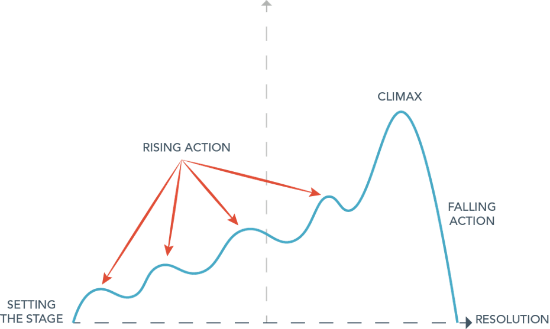How to Incorporate Storytelling into Employee Training

There’s a growing trend in the training industry in which more and more companies are relying on storytelling to improve the level of employee engagement in their current programs. Storytelling is most effective when instructors personalize the message for their specific audience. When a personal connection is made, workers tend to remember well-thought-out stories much better than instruction alone.
To understand how to create an effective, compelling training story, think about a few simple steps to get started.
Define your audience
First and foremost, know who you are talking to before you map out your content. The very first thing you should do is step into the learner’s shoes and ask, “What’s in it for me?”
Follow the anatomy of a story
Once you know how to speak to your audience and understand how to apply your message to their day to day perspective, think about how you plan to tell your story. Note: every story should have a beginning, middle, and conclusion. Use the standard story arc to guide you.

Outline clear learning objectives
As you develop and refine your story, keep in mind your ultimate goal for the training. Is it behavior change, process change, skill development, awareness, or some other objective? If you haven’t clearly defined your desired outcome, you may not achieve it.
Focus on engaging forms of delivery
So, you’ve spent time and effort developing a new, relevant story to improve your training materials—now what? If you fail to deliver the story in an engaging fashion, it won’t have the impact you want it to have. Consider hosting the training in smaller groups, encourage open discussion and shared experiences, quiz your trainees in real time, and think of ways to include fun competition and games to make the training experience more compelling.
Measure effectiveness, and continuously improve
When thinking about measurement, consider the words of Yogi Berra, “If you don’t know where you’re going, when you get there you’ll be lost.” Before deploying your new training program, outline what success should look like. Consider the role each of the following factors will play in a successful training session:
- Activity status: Pass/In Progress/Not Started
- Average test scores
- Training completion
- Job role competency
- Attendance
- Progress toward overall training goal
Final Thoughts
Which would you prefer for your own training? Death by PowerPoint, or stories that have relevant, meaningful, and timely application to your everyday job? If you think it through and take a strategic approach to developing your story line and learning objectives, the return on your invested time will show through as workers take their knowledge back to the production floor.
Sources:
http://thetrainingworld.com/resources/Training_Methods_and_Activities/Storytelling/
https://www.trainingindustry.com/blog/blog-entries/what-does-storytelling-in-training-look-like.aspx






